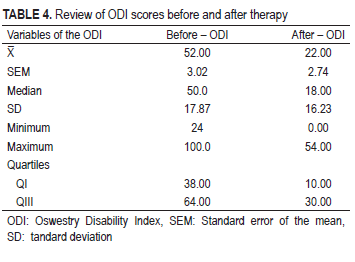Efficiency of dry needling along with standard physical treatment in people with lumbar pain syndrome
DOI:
https://doi.org/10.17532/jhs.2023.2625Keywords:
lumbar pain syndrome, conservative treatment methods, dry needlingAbstract
Introduction: The complaints that occur in the area of the lumbar spine are summarized under the term lumbar pain syndrome. These include lumbar discopathy, lumbago, lumboischialgia, sciatica, and other complaints associated with the lumbar region of the spine. The purpose of this study is to evaluate sociodemographic characteristics, assess the degree of disability patients experience due to lumbar pain syndrome, evaluate how many patients catastrophize their pain, and assess the effectiveness of the dry needling technique along with other physical therapy modalities in people with lumbar pain syndrome.
Methods: The study was designed as a prospective study conducted from March 2022 to June 2022. 35 subjects of both sexes, aged 25-83, agreed to participate in the study. The subjects who enrolled were pre-dominantly suffering from chronic lumbar pain syndrome, and there were also a smaller number of subjects with acute lumbar pain syndrome.
Results: The majority of respondents suffer from lumbar pain syndrome, which falls into the chronic category in 29 or 82.9% of cases. The mean score after the application of therapy on the Oswestry Disability Index (ODI) scale was 22.0 ± 16.23% and was statistically significantly lower. The average score after the application of the therapy on the visual analog scale (VAS) was 3.06 ± 2.31 and is statistically significantly lower (p < 0.05) compared to the period before the therapy.
Conclusion: Dry needling in combination with standard physical procedures led to statistically significant improvements. The mean score on the pain catastrophe scale, VAS, and ODI was significantly lower than in the pre-therapy period.
Downloads

Downloads
Published
License
Copyright (c) 2024 Demir Džaferović, Bakir Katana, Samir Bojičić, Amra Mačak Hadžiomerović, Amila Jaganjac, Namik Trtak, Eldad Kaljić

This work is licensed under a Creative Commons Attribution 4.0 International License.










